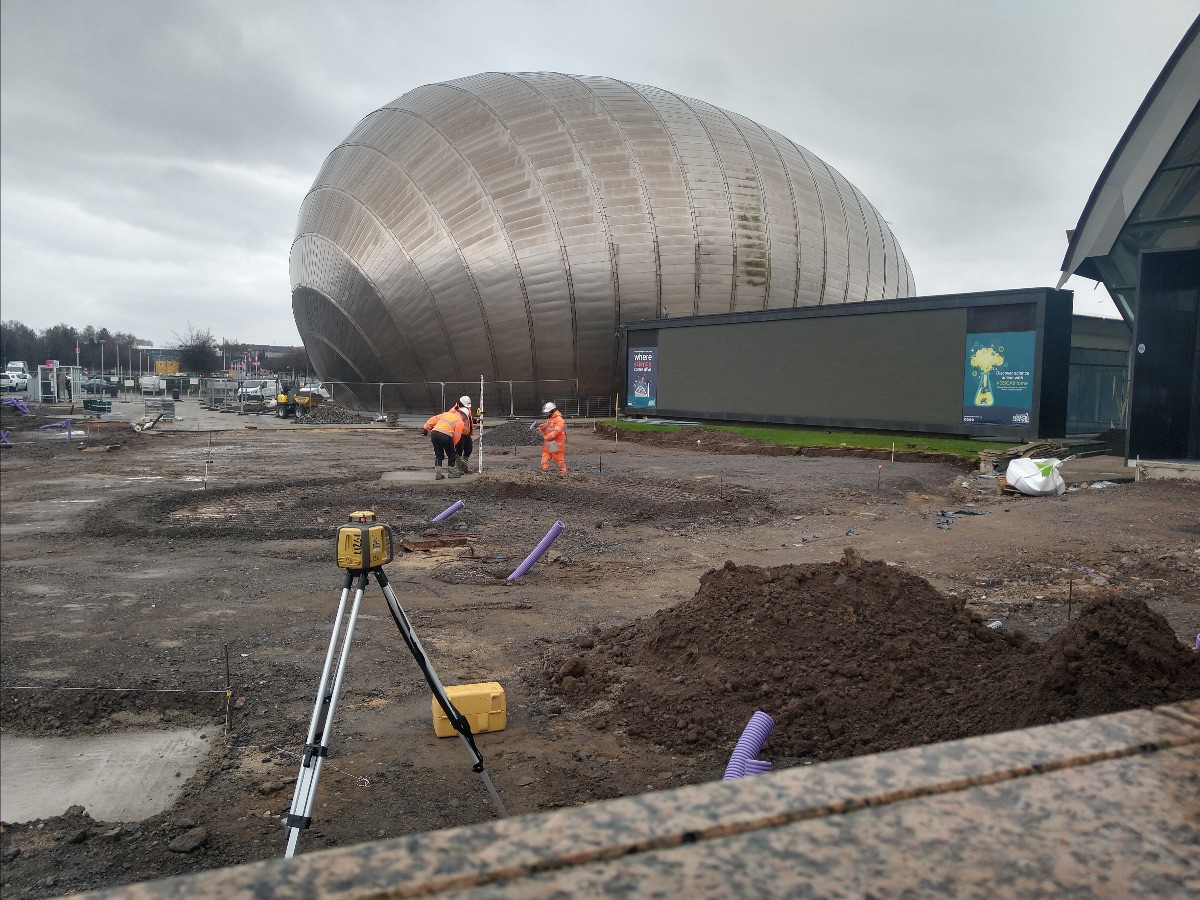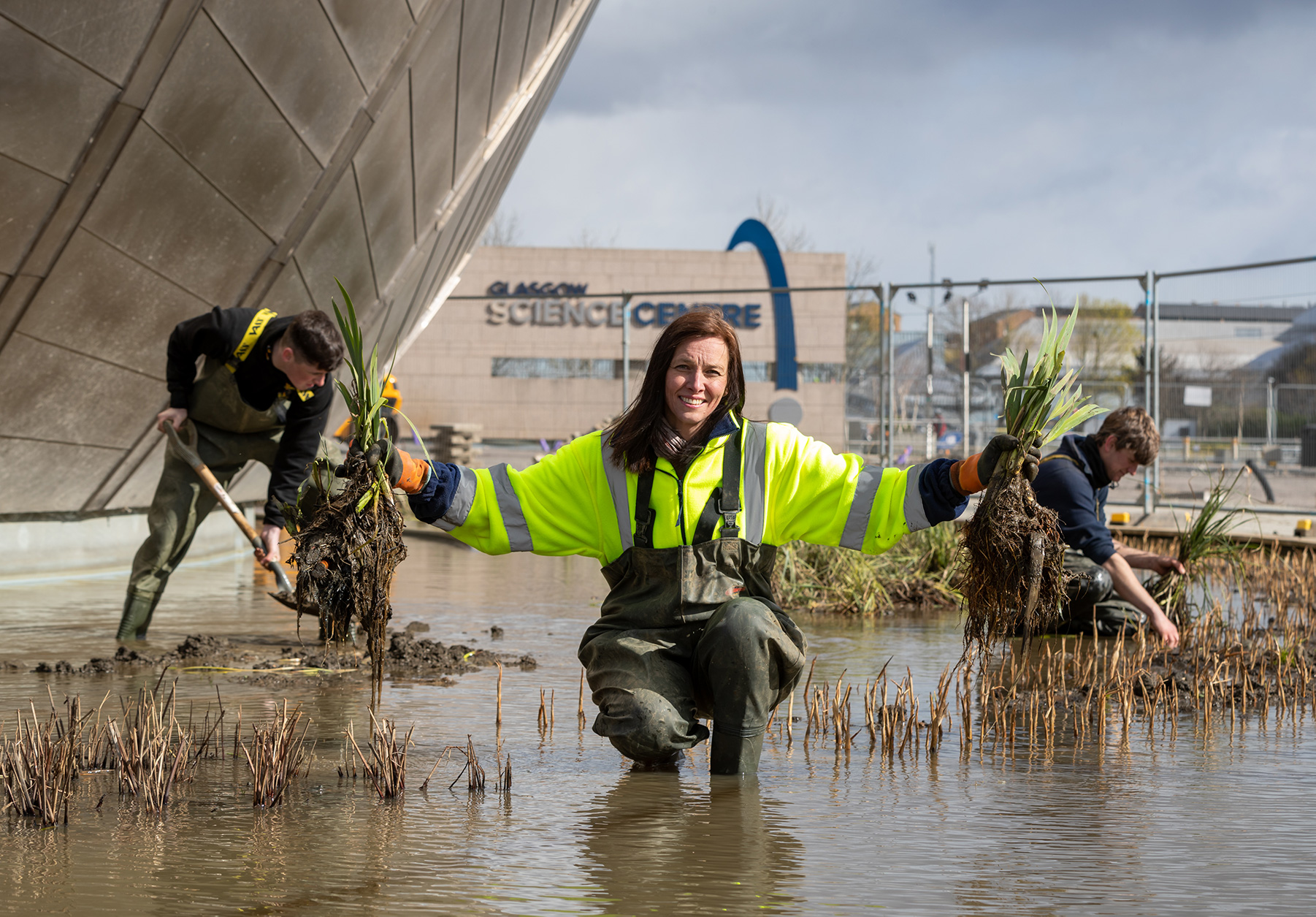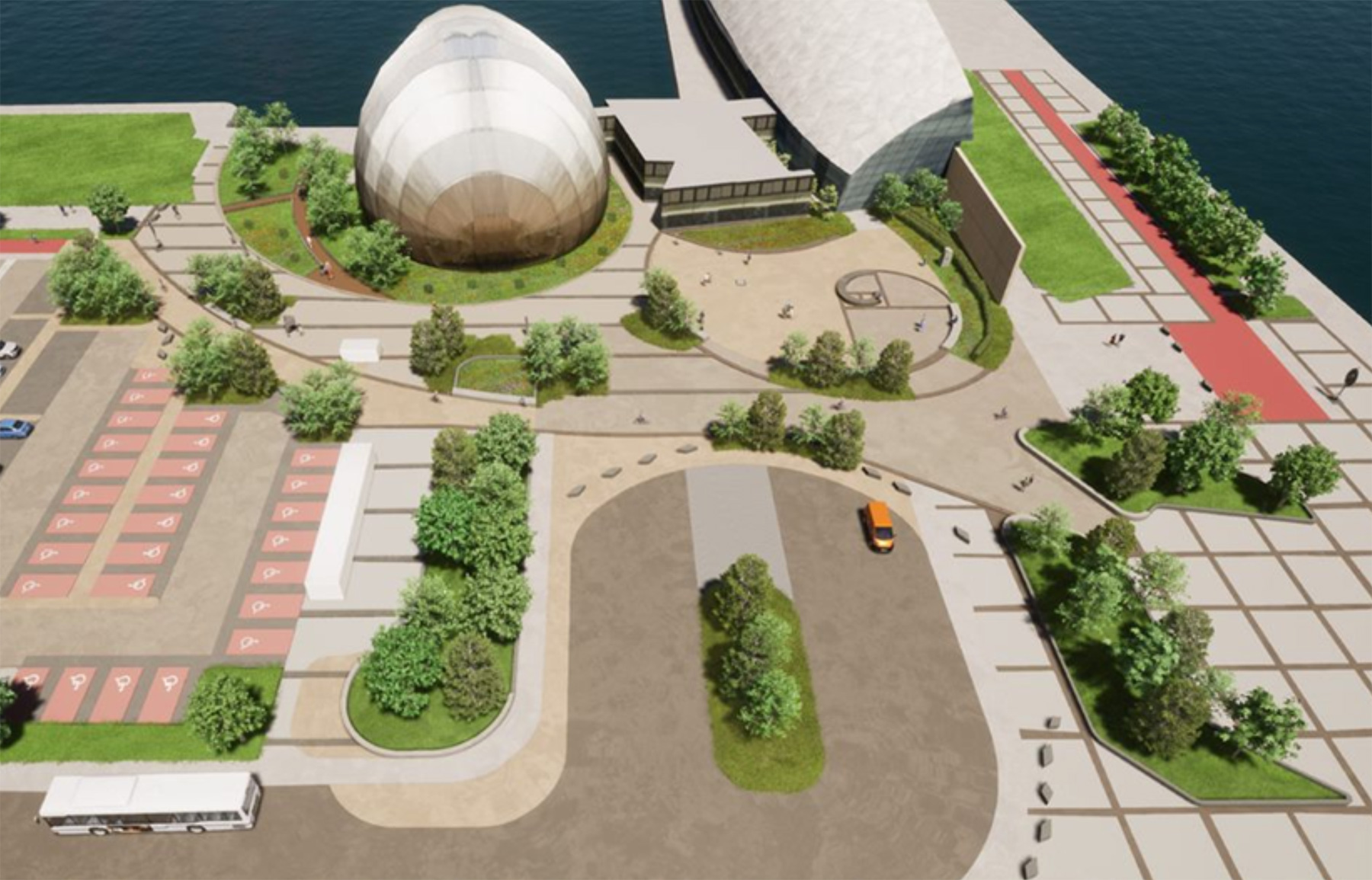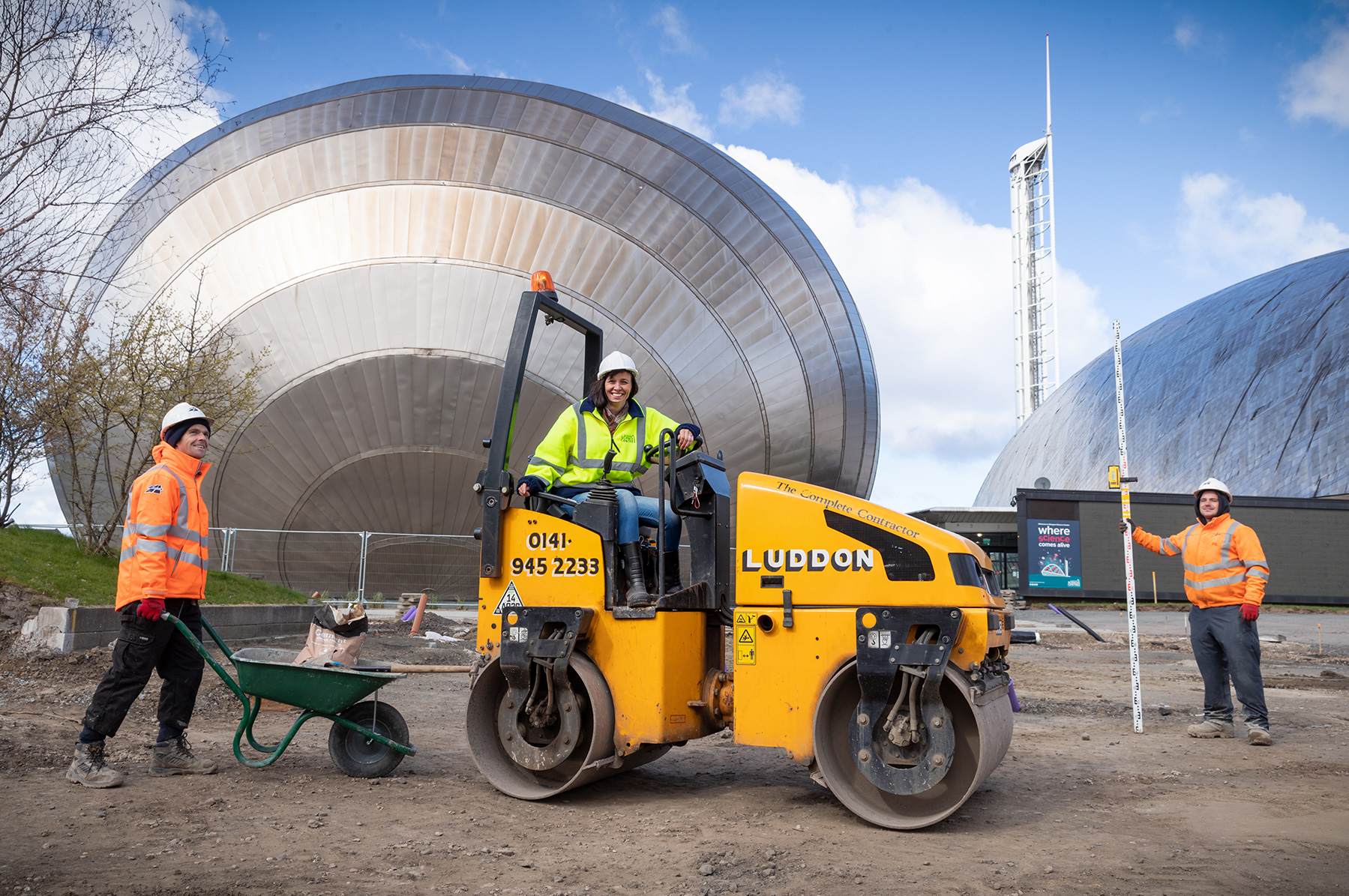In Pictures: Glasgow Science Centre details landscaping work progress
The outdoor space at Glasgow Science Centre’s location on Pacific Quay is getting a major makeover.
About this development:
- Authority:Glasgow City
- Type:Leisure
- Applications:
- Team:Austin-Smith:Lord (architect)

Part of the £4 million Connect programme, the transformation will extend the science centre’s exhibitions, spaces and outreach programmes.
Work has started to improve the greenery and biodiversity of the site and sees the installation of wetland moats, more trees and meadow planting.
A Fibonacci Garden, inspired by the shape sequence observed in pine cones, leaves and other parts of nature, will be a social space for people to relax and an event space for science engagement activities.

Plus, the work is helping to facilitate active travel into and through Pacific Quay with work to create a two-way cycleway and large cycle park. It is hoped this will encourage more cyclists along the Clydeside, and link better to national cycle routes.
Contractors are working hard to ensure the work to enhance the outdoor space will be completed by July 2021.

Dr Gillian Lang, who is deputy director of science at Glasgow Science Centre, said: “We’re so excited that this transformation is underway and can’t wait for visitors to come and explore the new space once it’s ready. We’re creating safe, outdoor learning spaces with exciting hands-on exhibits and opportunities to connect with nature.
“The aim is to create a community and civic outdoor space that is loved, social and interactive; connecting the science centre to the community, to the environment and to the city.”

The development of Glasgow Science Centre’s outdoor space was funded by the Inspiring Science Fund and Sustrans.
Chiquita Elvin, interim head of infrastructure and delivery for Sustrans Scotland, said: “We are delighted to support the revamp of the public spaces around the Science Centre through our Transport Scotland-funded Places for Everyone scheme.
“Glasgow Science Centre has worked closely with the children and young people visiting the centre to develop designs that make it easier for everyone to access the site sustainably and to create a public space where everyone will want to spend more time. The route through the site will also be improved for the people crossing the Clyde on foot or by wheel.”























